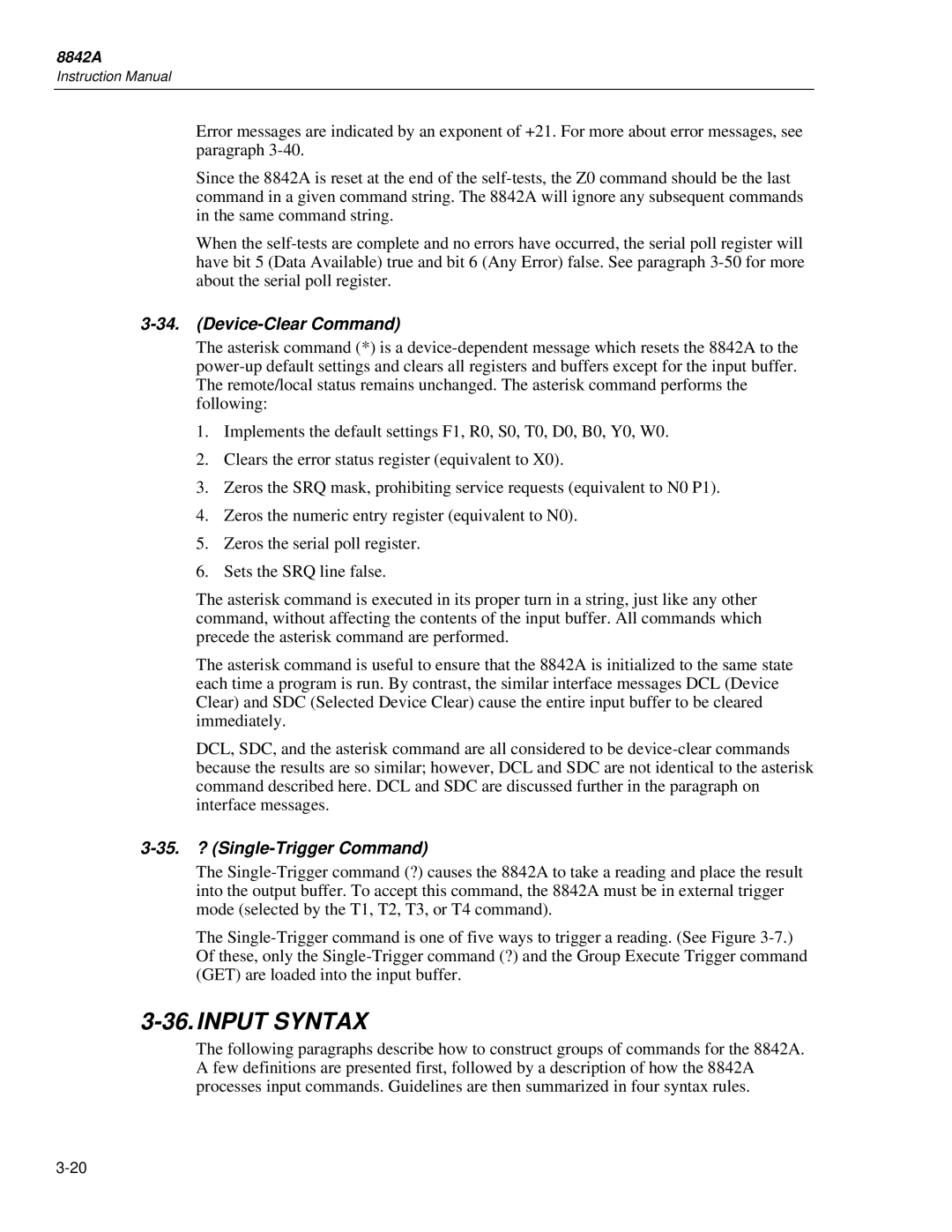8842A
Instruction Manual
Error messages are indicated by an exponent of +21. For more about error messages, see paragraph
Since the 8842A is reset at the end of the
When the
3-34. (Device-Clear Command)
The asterisk command (*) is a
1.Implements the default settings F1, R0, S0, T0, D0, B0, Y0, W0.
2.Clears the error status register (equivalent to X0).
3.Zeros the SRQ mask, prohibiting service requests (equivalent to N0 P1).
4.Zeros the numeric entry register (equivalent to N0).
5.Zeros the serial poll register.
6.Sets the SRQ line false.
The asterisk command is executed in its proper turn in a string, just like any other command, without affecting the contents of the input buffer. All commands which precede the asterisk command are performed.
The asterisk command is useful to ensure that the 8842A is initialized to the same state each time a program is run. By contrast, the similar interface messages DCL (Device Clear) and SDC (Selected Device Clear) cause the entire input buffer to be cleared immediately.
DCL, SDC, and the asterisk command are all considered to be
3-35. ? (Single-Trigger Command)
The
The
3-36. INPUT SYNTAX
The following paragraphs describe how to construct groups of commands for the 8842A. A few definitions are presented first, followed by a description of how the 8842A processes input commands. Guidelines are then summarized in four syntax rules.
